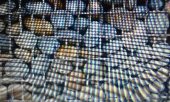posted 13 years ago
This idea is 10 min. old so it will literally ripen as I write this.
I've been working on two completely separate issues. Firstly, the creation of hugelkultur garden beds. Secondly, the building of Trombe walls inside the house.
Now here's how I plan to fuse the two. When I'm trying to grow things like tomatoes, peppers, eggplants and watermelons, there is plenty of heat during the day. But sometimes we get clear starry nights when the temperature drops below favorable for these warm weather crops. I should be able to alter the microclimate considerably by building my hugel beds at a steep angle and pointing them to the south. That will allow for maximum solar exposure. But in order to store lots of heat for night, I could incorporate plenty of dark colored rocks on the southern face of my beds. I have many tons of these.
Rock stores heat quite well and it's a good conductor of heat. By inserting many rocks into the bed I will be able to use not only their thermal mass but they will also tend to heat up the moist soil of the interior. Tomatoes and peppers hate cold feet.
Thermal storage would be most pronounced early in the year before these rocks become shaded by plants. During this early stage, plastic could cover the bed and protruding rocks would hold it off of the plants. I could see covering over half of the surface and still having plenty of root space. The rocks could be considered an impermeable mulch.
A covering of rock averaging 2 inches in depth adds just over one ton per hundred square feet. That's a lot of thermal storage.
Has anyone been doing this?
Has anyone built a hugelkultur bed over a steeply sloped rock pile?
Water is not much of an issue where I am, so excessive drainage would not be a problem. I'm thinking that a rock core might do quite well at retaining heat. The dark south facing rocks would trap heat and insulating mulches would help retain it.
A bed with a rock core would need to be covered with plastic in the spring to facilitate heating. After a desirable temperature is reached the high thermal mass should help to balance out diurnal range issues. The wide variety of glacial till should provide a good source of micronutrients when used in this manner.







